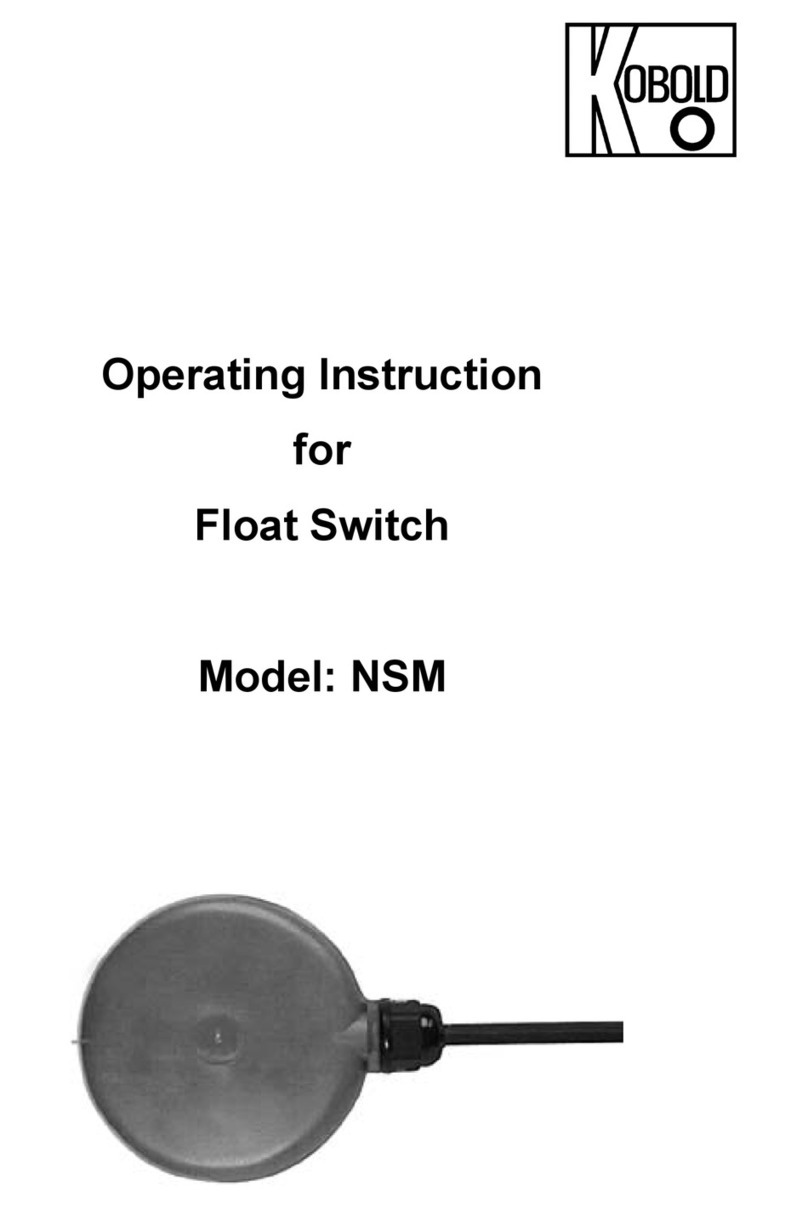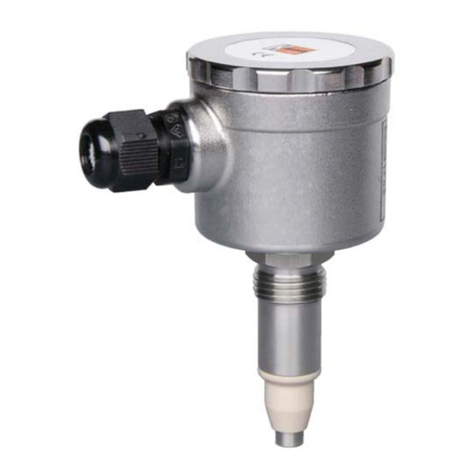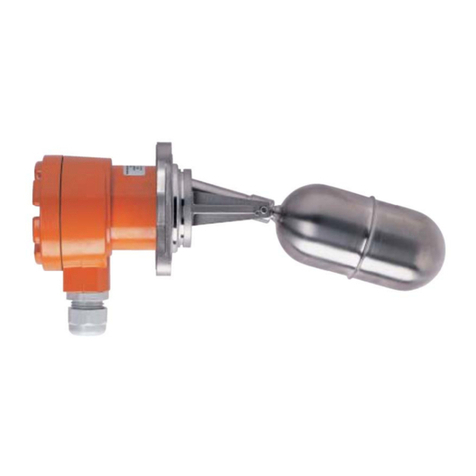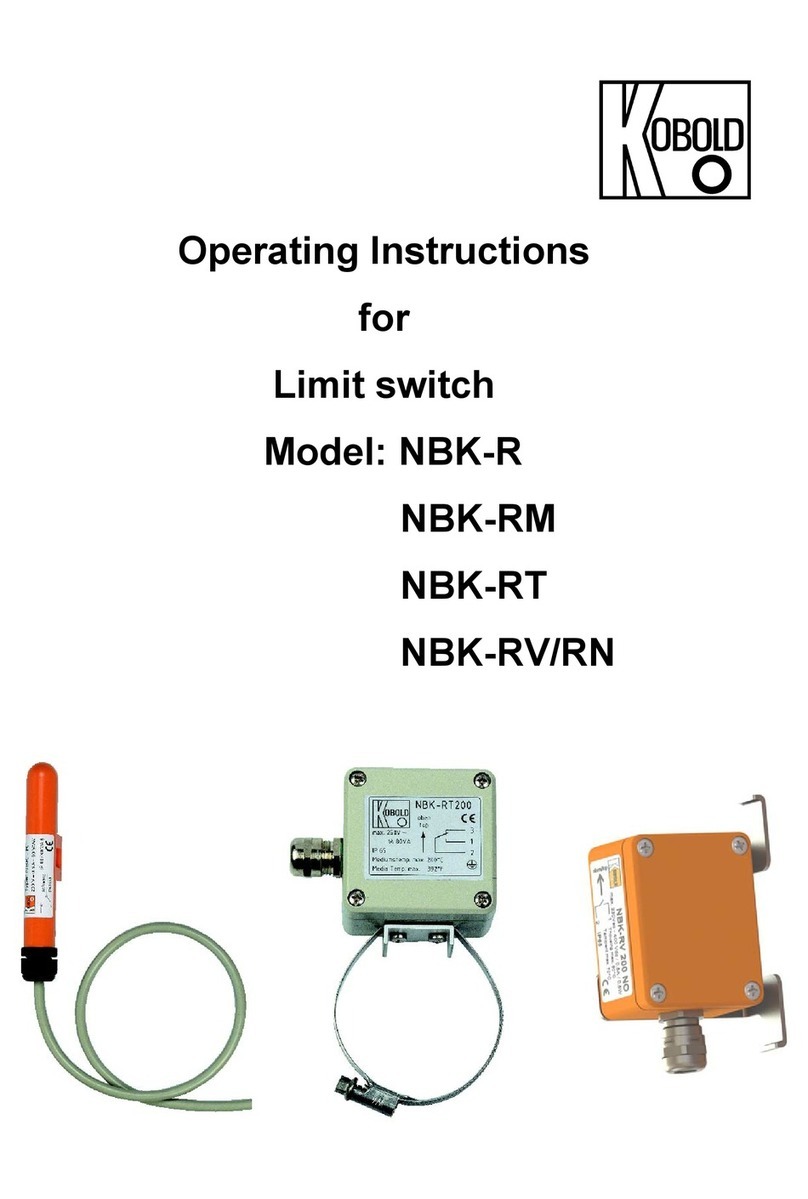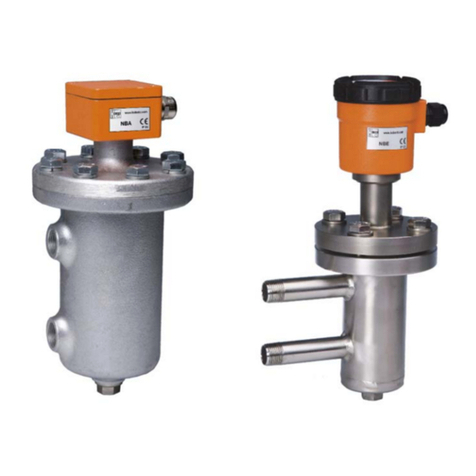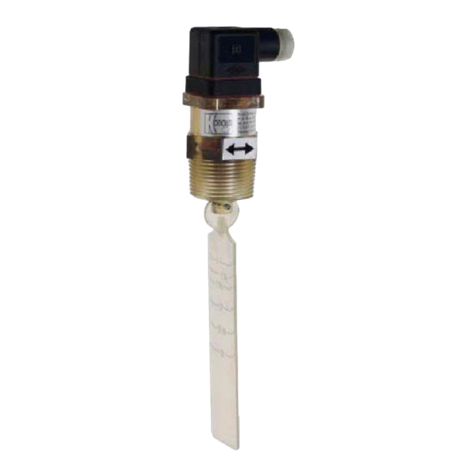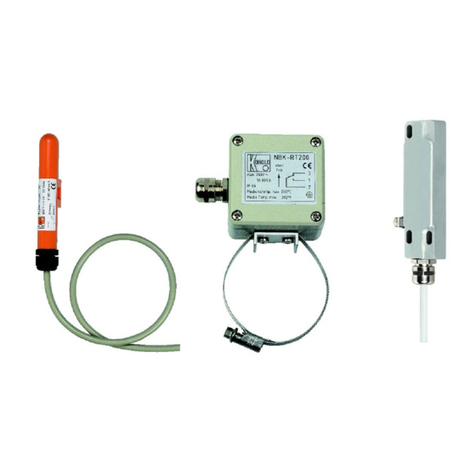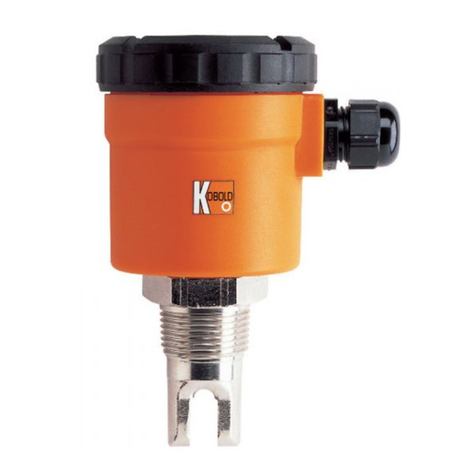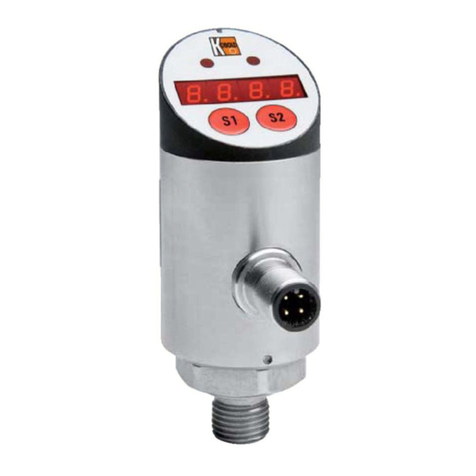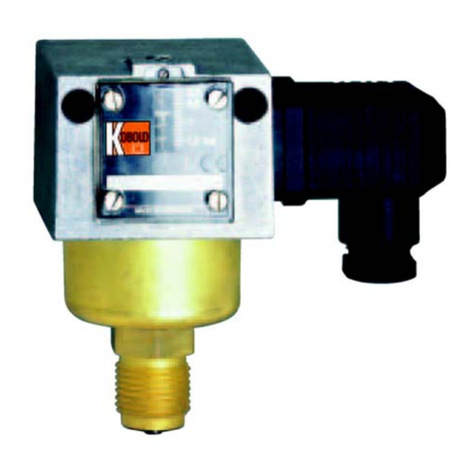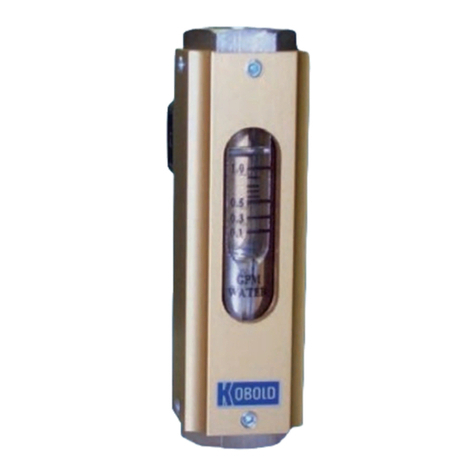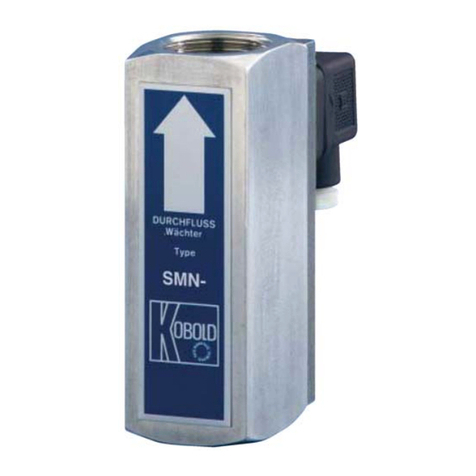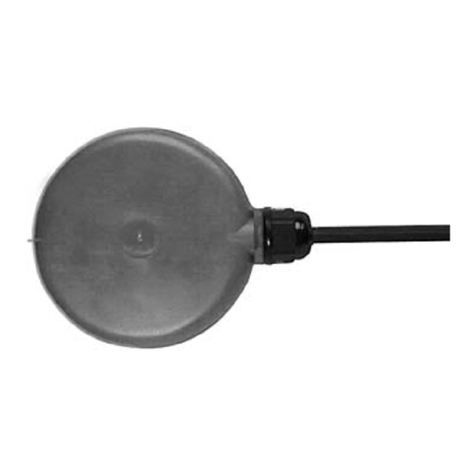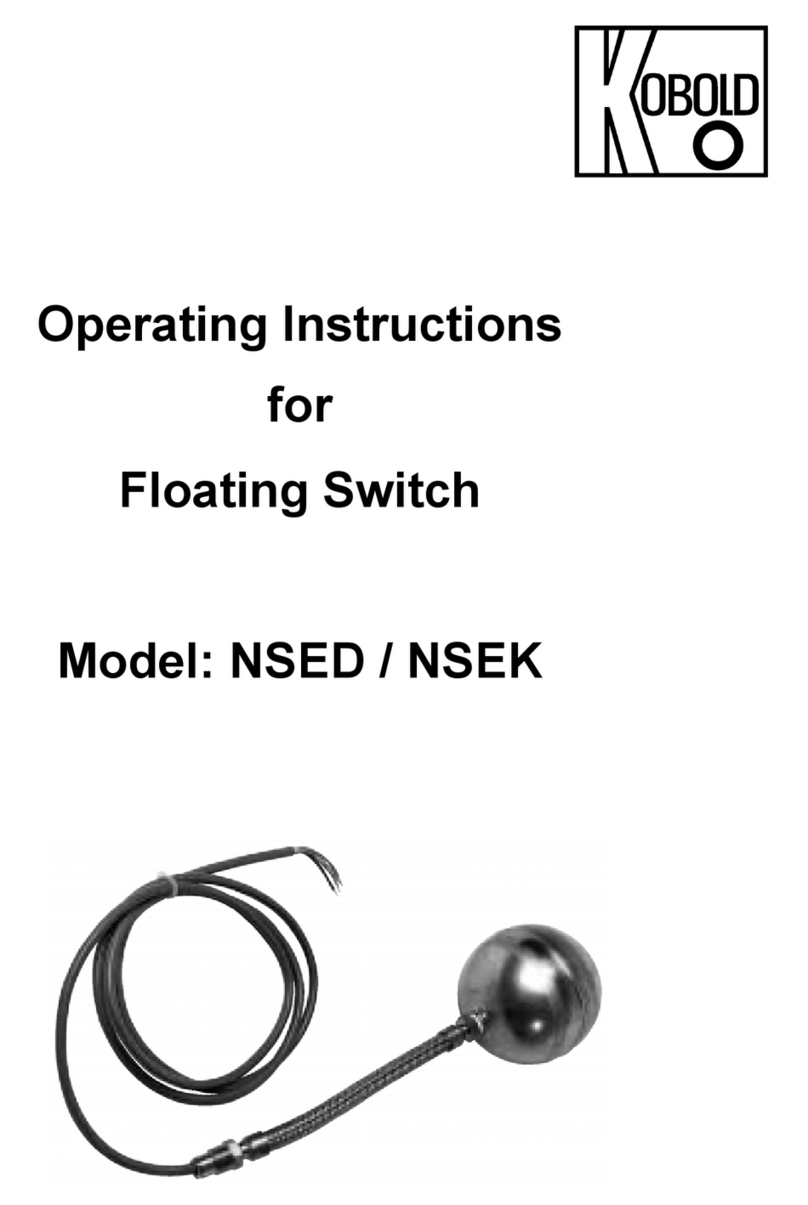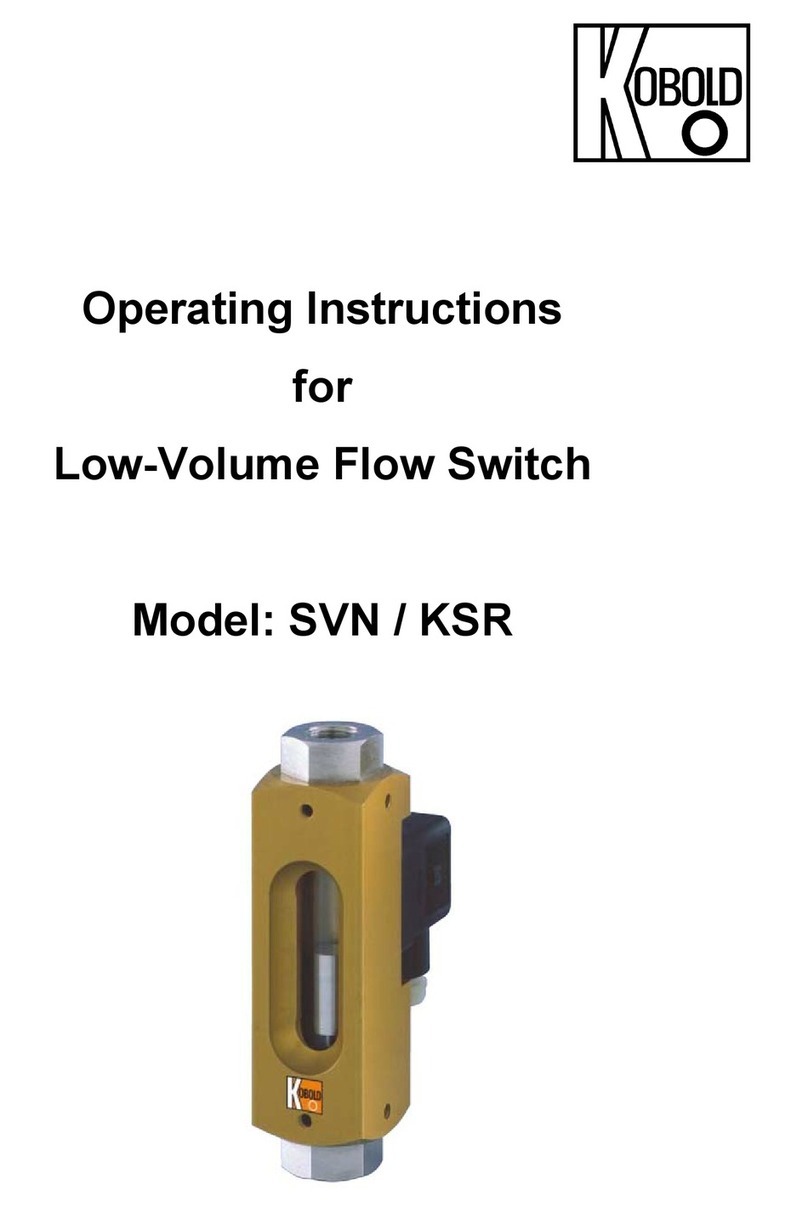
PSR/PSE
page 8 PSR/PSE K23/0322
h) It is the responsibility of the installer to ensure that the flow monitor functions
properly in conjunction with the individual evaluation devices and that it is
approved for the intended purpose.
i) The intrinsically safe connection must be made using approved / tested
evaluation devices, which may have to be equipped with suitable Zener
barriers or switching amplifiers.
6.3. Commissioning, installation, operation
Depending on the IP degree of protection, the time for cleaning the equipment
(dust deposits) must be specified. Other important facts:
a) The product may only be put into operation in intrinsically safe circuits in the
zones defined in Section 2 in Section "Permitted Use" by specialists with a
qualification similar to a qualified person in accordance with TRBS 1203.
b) The products may only be used in a normal industrial atmosphere. If
aggressive substances are present in the air, the manufacturer should always
be consulted. The products must be appropriately protected in adverse
environmental conditions.
c) The operation of the product is only permitted in the completely assembled
and undamaged housing. In the event of possible damage, the operator may
have to consider the spread of zones; In addition, operation is not permitted if
the housing is damaged.
d) The ambient conditions specified in the operating instructions must be
strictly adhered to and appropriately protected against adverse ambient
conditions.
e) The mechanical flow monitor may only be operated when it is completely
filled. Exceptions according to the operator's risk assessment are only
permitted for start-up and shutdown.
f) Thermal radiation from third-party products / components must be taken
into account.
g) The flow monitor must be protected against inadmissible ingress of liquids
and / or contamination.
h) The contact must be protected against UV light.
i) Stuck parts (e.g. due to frost or corrosion) must not be loosened with force
in the presence of an explosive atmosphere. Icing must therefore be
avoided.
j) The flow monitor may only be exposed to low vibrations, see also IEC 34-
14.
k) A direct electrostatic discharge of high energy onto the equipment is not
permitted (usually cannot be generated by human contact). To ensure that
electrostatic charges are discharged, the national requirements must be
taken into account.
l) In particular, isolated capacities must be prevented.
m) All construction parts must be connected to one another using metal.
n) In zones 20, 21 and 0, the connection cables must be protected against
electrostatic charges.
o) Equalizing currents must not be routed through the metallic structures.
p) Only Zener barriers or switching amplifiers whose output circuits are
approved / tested for use in an explosive atmosphere may be used. In
Europe, use in Zone 1 requires an EC type-examination certificate for the
